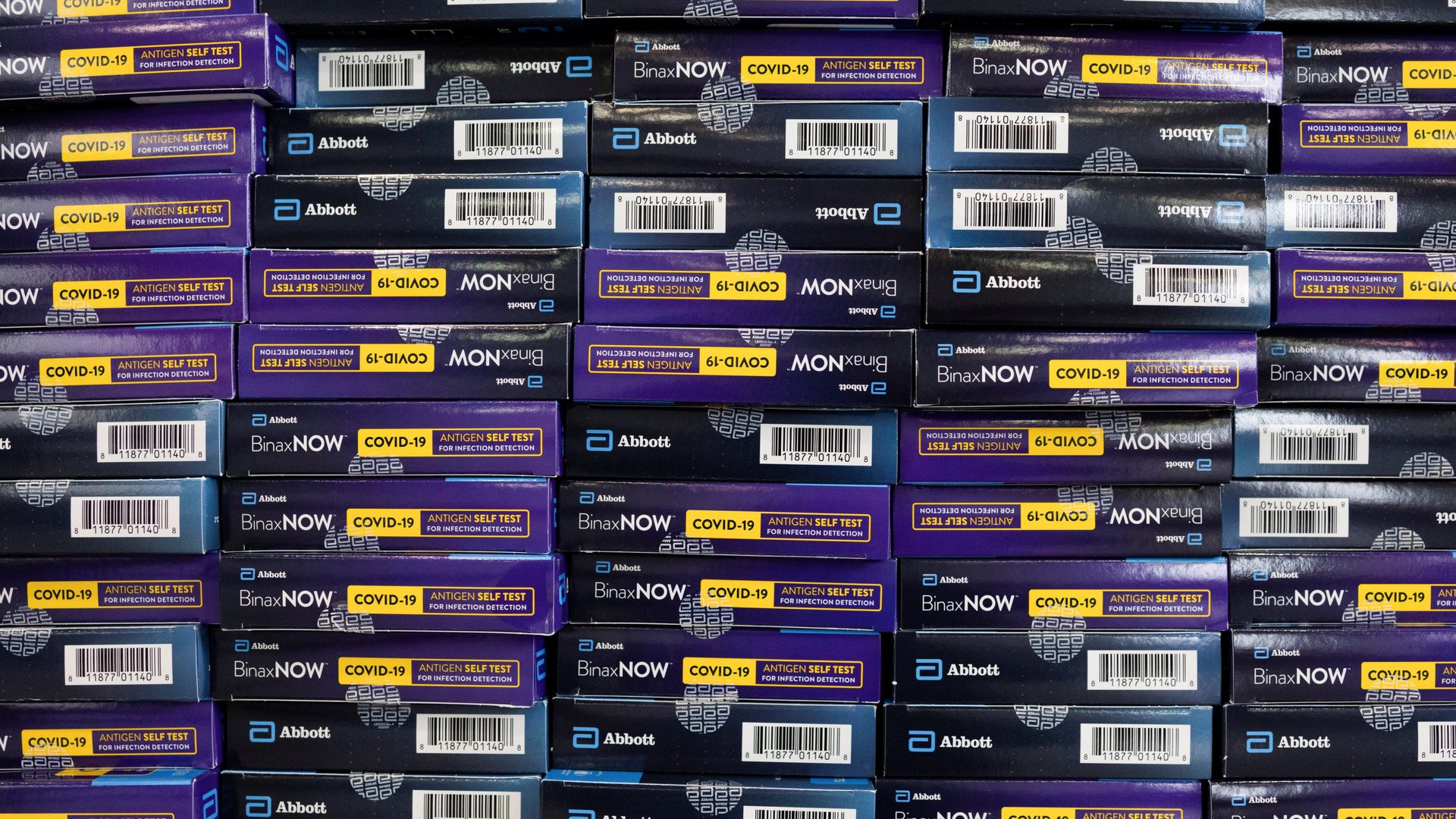How the US could create a test-to-treat location in every home
The White House has started its covid-19 test-to-treat program, where patients who test positive at a designated rapid-testing site can be immediately prescribed antiviral medications, for free. But the program is limited to just a few hundred pharmacies and community health centers. Healthcare providers—including pharmacists, who aren’t allowed to prescribed the pills—have warned it needs reform to be a reliable source of infection control.


The White House has started its covid-19 test-to-treat program, where patients who test positive at a designated rapid-testing site can be immediately prescribed antiviral medications, for free. But the program is limited to just a few hundred pharmacies and community health centers. Healthcare providers—including pharmacists, who aren’t allowed to prescribed the pills—have warned it needs reform to be a reliable source of infection control.
This doesn’t mean the concept of test-to-treat lacks merit. Quite the contrary, says Michael Mina, an epidemiologist who has emerged as the US’s foremost expert on at-home rapid antigen tests for covid-19. He’s been advocating for their wider adoption since the early days of the pandemic. Now he wants to see them paired with software that can be used at home to consult with a health provider and obtain a prescription for treatment.
Test-to-treat, but make it digital
Rather than test-to-treat locations, says Mina, individuals should be able to use at-home rapid tests and connect with a telehealth service that can verify the test results and prescribe an antiviral treatment right away if necessary. In a sense, every home could become a test-to-treat center, provided patients have a rapid test available.
eMed, a telehealth company Mina joined as chief science officer to find practical applications of the rapid-test research he was conducting at Harvard, will start offering this type of service starting next week, for as little as $20. But the model would work just as well if implemented by the government, Mina says. “What I really think the government should do is make a ‘test-to-treat.gov’ site,” he says.
A program like this would apply something that has been largely missing from the US pandemic response: software innovation. Software has a lot of potential to improve public health measures, but the only notable use of it in the US’s covid-19 response had been the attempts at contact-tracing apps, which had barely any success.
The benefits of a telehealth-based system
A government website with free telehealth assistance could be a simple way to overcome the main barrier currently stopping people from getting treated, which is having to leave home to get tested. The process would be simple: By scanning the barcode on the test box—which are currently not really serving much of a purpose—people could access a government telehealth site where they could be guided through test taking, and given treatment, for free.
A test-to-treat-from-home approach would likely have the added benefit of catching covid-19 infections at the earlier stage and containing the spread better, because people who test positive at home wouldn’t have to venture out to seek a prescription. It also would help with getting a real-time picture of where cases are and how the epidemic is moving, based on accurate testing data.